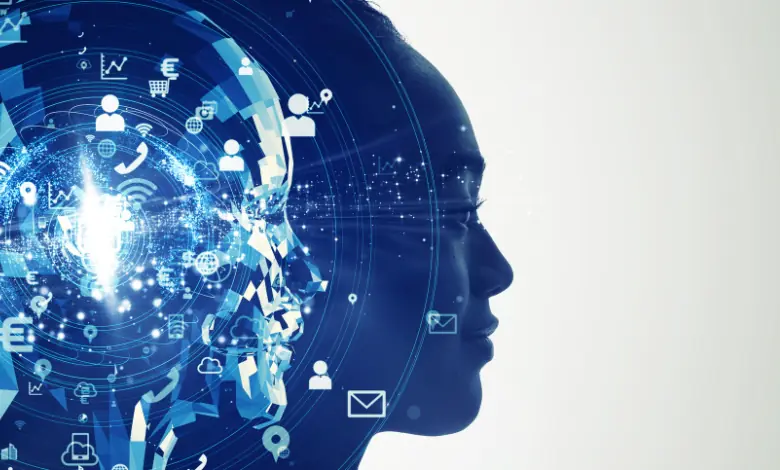Identity in the Cloud: Exploring the Possibilities of AI Avatars

Identity is like a description of who we are – it includes things like our name, how we look, our personality, and what we like. Our identity is shaped by the people around us, like family and friends, as well as our culture and society.
But now, things are changing because of new technologies. One big change is the use of artificial intelligence (AI) to make avatars. Avatars are like digital versions of ourselves that can be personalized and moved around on a computer or online. This is a big deal because it’s a new way for us to show and share who we are.
How are we shifting to digital identity?
Digital identity is the way we present ourselves on the internet, like on websites, apps, and social media. It includes things like usernames, passwords, profiles, and what we like. Having a digital identity can be useful in many ways for people.
Convenience and accessibility:
Digital identity makes things easy and accessible for people. It lets them create and use their online identity on devices like computers, smartphones, or tablets. They can also store and manage their identity online using services like Google Drive, Dropbox, or iCloud. This way, everything is in one place and easy to reach.
Diversity and creativity:
Digital identity brings diversity and creativity to users. It lets them create and show their identity online using different sources, targets, and formats that represent various aspects like gender, race, age, and style. This helps celebrate individuality and diversity. Additionally, users can generate new and unique online identities using tools like filters, stickers, and emojis, which enhance and embellish their online identity in creative ways.
Engagement and interaction:
Digital identity makes it possible for users to engage and interact online. They can communicate and share their identity using different channels like text, voice, or video. Various modes, such as interactive, immersive, and adaptive, allow users to control and communicate with their online identity, providing feedback and guidance. Moreover, users can connect and collaborate with others online through platforms like social media, email, and video, which distribute and display their identity. These platforms offer features such as likes, comments, and messages to enhance the interactive experience.
How are AI avatars emerging in digital identity?
AI avatars are becoming a part of digital identity through the use of AI and machine learning technologies like computer vision, natural language processing, speech recognition, and speech synthesis. These technologies allow AI avatars to capture and replicate the physical and behavioral traits of human faces and bodies. Not only can AI avatars mimic human characteristics, but they can also interact and communicate with users using voice, text, or gestures. They can offer guidance, support, and feedback.
In the realm of digital identity, AI avatars contribute by providing various features and functions. They add a dynamic and interactive element to how users express themselves online, enhancing the overall digital identity experience.
Role in redefining digital identity:
AI avatars are reshaping digital identity by empowering users to create or select avatars that mirror their identity, personality, and preferences. These avatars offer diverse functionalities, including the ability to modify appearance, personality, and emotions. Users can adjust these aspects on their own or leverage data and analytics for customization.
Moreover, AI avatars adapt to users’ needs, interests, and expectations, contributing to a personalized experience. Users can seamlessly integrate and utilize their avatars across different online platforms and contexts, such as websites, apps, and social media. These platforms leveraging AI avatars provide various features and functions, such as virtual try-ons and fittings, real-time styling advice, and personalized recommendations, further enhancing the user’s digital identity.
What are the possibilities of AI avatars?
AI avatars can offer various possibilities and opportunities for users, such as:
Personalization and customization:
AI avatars contribute to personalization and customization for users through the use of AI technologies such as computer vision and Generative Adversarial Networks (GANs). These technologies capture and replicate user features, enabling the creation of personalized avatars. Users have the flexibility to customize their avatars, adjusting features such as size, color, or style.
Furthermore, AI avatars can generate new and realistic avatars, mimicking celebrities, politicians, or friends. Users can modify their avatars using data and analytics, aligning them with their individual needs, interests, and expectations. This could involve changes to the avatar’s appearance or behavior. Additionally, AI avatars can provide personalized recommendations or offers based on user preferences, contributing to a tailored and engaging digital identity experience.
Enhancing virtual interactions:
AI avatars significantly enhance virtual interactions for users by leveraging AI technologies such as natural language processing and dialogue systems. These technologies analyze and generate natural language, encompassing both text and speech. Users can interact and communicate with their avatars, receiving feedback, guidance, and answers to their questions. Avatars can also provide suggestions or help in resolving issues, creating a more dynamic and responsive virtual experience.
Moreover, AI avatars facilitate interactions between users by utilizing technologies like virtual reality and augmented reality. These tools generate realistic and expressive avatars, enabling users to engage with each other’s avatars in immersive environments. The modes offered, such as interactive, immersive, and adaptive, allow for controlled and meaningful communication with avatars, providing feedback and guidance. This contributes to a more engaging and interactive virtual space for users.
Potential benefits:
AI avatars can be really helpful for people in many ways. They can make online activities better by using really good data and smart computer programs that understand and copy how people and things work. This means online stuff can be done faster and better. It also saves time and money.
Using AI avatars can bring a lot of good things to online activities. It can make things more diverse, creative, and innovative by using different ideas and styles. This celebrates how everyone is unique. It can also make online activities more interesting, fun, and emotional, appealing to different tastes and moods.
When AI avatars are used in different ways, like being interactive or creating immersive experiences, it can make people more engaged and satisfied. This means people enjoy what they do online more, and they keep coming back for more.
What are the challenges and concerns of AI avatars?
AI avatars can also pose various challenges and concerns for users, such as:
Privacy and security issues:
Privacy and security issues are all about keeping people’s personal information safe and respecting their privacy. This includes things like photos, videos, and audio that could be used to make or target AI avatar content. These issues can come up when users don’t know or agree to their personal information being used for making AI avatars. There’s also a risk if their personal information is hacked, stolen, or used in a bad way by malicious people, like for identity theft, fraud, or blackmail.
Ethical considerations:
Ethical considerations involve thinking about what’s morally right or wrong and what aligns with the values and norms of users and society. This includes things like fairness, justice, and responsibility, which can be impacted by creating or using AI avatar content. Ethical concerns can arise when users are not aware of the implications or consequences of using AI avatars or when the creation or use of such content goes against the rights and interests of users or others. This might involve issues like deception, manipulation, or exploitation.
Potential risks in avatar representations:
Potential risks in avatar representations are concerns related to how accurate and genuine the AI avatar content is. This includes images, videos, and audio influenced by the data, algorithms, and models used to create them. There’s a risk that these avatars may unintentionally reflect or reproduce biases, prejudices, or stereotypes present in the data, algorithms, or models. These biases could be related to factors like race, gender, or culture.
These risks can impact the quality, diversity, and representation of AI avatar content, leading to negative consequences for users and society. This might include issues such as discrimination, exclusion, or the spread of misinformation.
How to create DeepBrain AI Avatar?
DeepBrain AI is a company making a cool technology that helps people create and use avatars that look and act like real people. They use smart computer programs to do this, like ones that understand how we look and talk. With this technology, users can make avatars for fun, learning, or talking to others.
Making an avatar with DeepBrain AI is easy. Users just need to:
- Sign up on the DeepBrain AI website using their email, username, and password.
- Pick a photo or video of themselves or choose from pre-made avatars.
- Change things about their avatar, like how it looks, its personality, and emotions, using sliders, buttons, and menus on the website.
- Use their avatar on different online places like websites, apps, and social media for fun features like virtual try-ons, styling advice, and personalized recommendations.
DeepBrain AI wants everyone to be able to use these avatars easily and have a fun experience with them.
Conclusion
AI avatars are a cool technology that makes your online identity experience better. They offer neat features like personalization, where you can make your avatar unique, and customization to make it just how you want. Also, they make virtual interactions more fun.
However, there are some challenges and concerns with AI avatars. There could be privacy and security issues, meaning people might worry about their personal information. Ethical considerations involve thinking about what’s right and wrong when using AI avatars. There’s also a concern about the avatars accurately representing people and not showing any biases.






